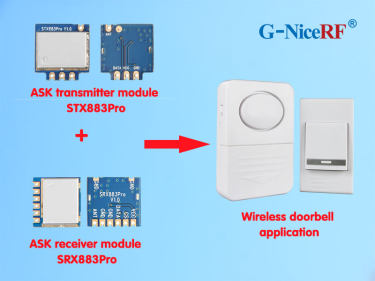Do LoRa Modules Need Antennas? How to Choose the Right Antenna for LoRa Modules
Do LoRa modules need antennas? Yes, LoRa modules absolutely require antenna connections to facilitate proper communication. Antennas serve as the physical interface between LoRa modules and the external environment, responsible for transmitting and receiving wireless signals. Without antenna connections, communication range will be limited, signal reception will be weak, or there may be no signal at all, making it susceptible to interference and noise. Therefore, to ensure the normal operation of LoRa modules, it is essential to connect suitable antennas.
The selection of the appropriate type of antenna should be based on specific application requirements, taking into account factors such as frequency range, polarization, and impedance matching with the module. This ensures the achievement of stable and reliable LoRa communication.

Common Types of Antennas for LoRa Modules
There are several common types of antennas used with LoRa modules:
- Linear Polarized Antenna (e.g., Straight Rod Antenna): This is a common and straightforward antenna type suitable for vertically polarized LoRa modules. Straight rod antennas typically have a fixed length and are easy to install and use.
- Patch Antenna: Patch antennas are small, lightweight antennas ideal for compact spaces or integration within the enclosure of the LoRa module. They are often attached to the circuit board through soldering or adhesive.
- PCB Antenna: PCB (Printed Circuit Board) antennas are integrated onto the circuit board itself. They are usually designed in the form of traces or spirals on the circuit board and offer lower cost and good consistency.
- External Antenna: For applications that require extended communication range and flexibility, external antennas are an option. External antennas can come in various forms, such as whip antennas, helical antennas, square-shaped antennas, etc. The choice depends on specific requirements.
When selecting an antenna for your LoRa module, consider factors like frequency range, gain, polarization, antenna size, installation method, and electrical characteristics. Tailor your antenna choice to meet the needs of your application and design constraints, ensuring stable and reliable LoRa communication.
How to Choose the Right Communication Antenna for LoRa Modules
Selecting the appropriate communication antenna for LoRa modules involves considering several key factors:
- Frequency Range: LoRa modules typically operate within specific frequency ranges, such as 433MHz, 868MHz, 915MHz, and others. Therefore, your communication antenna must support the corresponding frequency range to ensure compatibility with your LoRa module's communication needs.
- Polarization: LoRa communication typically uses vertical polarization. It's advisable to choose a communication antenna that supports vertical polarization. Matching the antenna's polarization with the module's polarization can enhance signal transmission performance.
- Gain: The gain of a communication antenna determines its ability to radiate and receive signals. Opting for an antenna with an appropriate gain can extend communication range and enhance resistance to interference. Select the antenna gain based on the specific requirements of your application.
- Impedance Matching: LoRa modules commonly use a 50-ohm impedance. Ensure that your communication antenna matches this impedance to guarantee efficient signal transmission.
- Avoid Obstacles: Try to position your antenna away from nearby obstacles, and avoid placing it too close to the ground. Clear line-of-sight can improve signal propagation.
- Size and Shape: Choose the size and shape of your communication antenna based on the specific environmental conditions and space constraints of your application. In some cases, you may need to consider antenna miniaturization, concealed installation, or specialized shapes to meet your design requirements.
By carefully considering these factors and tailoring your choice of communication antenna to your LoRa module's needs, you can achieve stable and reliable LoRa communication in your application.

Antennas are integral components of communication transmission systems, and their performance directly impacts the metrics of a communication system. Common antennas include wire antennas, and you can also use IPEX to SMA cable converters, rod-shaped antennas, or small suction cups, among others. Users can select antennas based on their specific application environments.
To ensure that your modules operate in their optimal working conditions, you can refer to the specifications and recommendations provided by LoRa module suppliers when choosing antennas. This ensures that the selected antennas meet the requirements of your LoRa modules and establish stable and reliable communication connections.
Furthermore, you can balance antenna performance and size according to the specific demands of your application. This flexibility allows you to fine-tune your antenna selection to achieve the desired communication results.
 +86-755-23080616
+86-755-23080616
 sales@nicerf.com
sales@nicerf.com
Website: https://www.nicerf.com/
Address: 309-314, 3/F, Bldg A, Hongdu business building, Zone 43, Baoan Dist, Shenzhen, China




